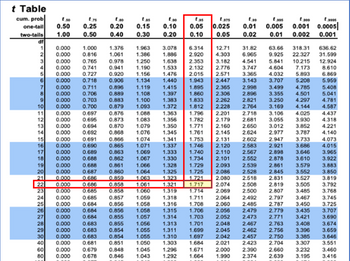The mean inspection time, using the current method of quality control, has been found over a long period of time to be 160 seconds. Your manager decides to introduce a new method of quality control aimed at reducing this to as short as possible and so she expects the new method to produce a smaller mean. A random sample of measurement of inspection time taken after the new method had become established gave the following distribution: Time (sec) 120 129 135 144 157 173 179 191 Number 1 3 2 3 4 3 3 4 Your manager thinks that the introduction of the new method of inspection has been very effective in reducing the inspection time. Using the data provided and assuming the inspection time to be normally distributed with a standard deviation of 28 seconds, test this hypothesis at 5% level of significance
The mean inspection time, using the current method of quality control, has been found over a long period of time to be 160 seconds. Your manager decides to introduce a new method of quality control aimed at reducing this to as short as possible and so she expects the new method to produce a smaller mean. A random sample of measurement of inspection time taken after the new method had become established gave the following distribution:
|
Time (sec) |
120 |
129 |
135 |
144 |
157 |
173 |
179 |
191 |
|
Number |
1 |
3 |
2 |
3 |
4 |
3 |
3 |
4 |
Your manager thinks that the introduction of the new method of inspection has been very effective in reducing the inspection time. Using the data provided and assuming the inspection time to be
Trending now
This is a popular solution!
Step by step
Solved in 2 steps with 1 images

Can you explain how the highlighted boxes in the attached image a little better?
The T table i have, which is also attached( given the degree of freedom is 22) gives a value of 1.717?
Whereas you have given values of -1.64. Then a P value of 0.432? Can you explain further how you have reached these different figures?
![2
x - l
S/√n
=
At 5% level of significance. α = 0.05
Critical value
LLAR
=
=
& P-value
159 - 160
28
P
-0.1713
20.05 =-1.64
2 <0·1213]
0.432
$ Obtained from 2-table
lor Normal probability
calculator 4
Since. 2 > 2x
and P-value > α, hence
We accept to at 5% level of significance.
|1t μ = 160.
Conclude that, new method of inspection is not](https://content.bartleby.com/qna-images/question/c32c1e5f-b2a4-418c-8d03-158c2a8cd1bc/4a755818-e47d-483a-bc0c-096149b5d211/r77obol_thumbnail.png)


